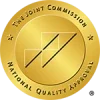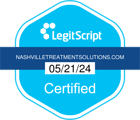Borderline Personality Disorder (BPD) rage is an intense, uncontrollable burst of anger that can feel overwhelming for both the person experiencing it and those around them. While these episodes can be frightening and destructive, understanding their nature and learning proper management techniques can help reduce their frequency and intensity.
Learn more about our mental health programs in Nashville.
What is BPD Rage?
BPD rage differs from typical anger in both its intensity and triggers. It’s characterized by explosive outbursts that seem disproportionate to the situation, often described as “zero to hundred” in seconds.
BPD rage can include verbal aggression, physical outbursts, and self-destructive behaviors. Unlike normal anger, BPD rage often comes with feelings of dissociation, where the person might feel disconnected from their actions or experience temporary lapses in memory of the event.
Learn more about Borderline Personality Disorder
How Long Does BPD Anger Last?
BPD anger episodes typically follow a distinct pattern:
- Initial Trigger Phase: Seconds to minutes
- Peak Intensity: 10-30 minutes
- Gradual De-escalation: 30 minutes to several hours
- Aftermath/Recovery: Several hours to days
However, without proper intervention, these episodes can chain together, creating extended periods of emotional dysregulation. The aftermath often includes intense shame, guilt, and fear of abandonment, which can trigger additional episodes if not properly managed.
What Triggers BPD Anger?
Common triggers for BPD rage include:
Perceived Abandonment
- Unanswered text messages or calls
- Changes in plans or cancellations
- Perceived rejection in social situations
- Physical or emotional distance from loved ones
Invalidation
- Having emotions dismissed or minimized
- Being told to “calm down” or “get over it”
- Having experiences questioned or doubted
- Feeling misunderstood or ignored
Loss of Control
- Unexpected changes in routine
- Feeling trapped or cornered
- Being unable to influence outcomes
- Feeling powerless in relationships
Identity Challenges
- Criticism or perceived criticism
- Questioning of abilities or intentions
- Challenges to self-image
- Comparison to others
Signs and Symptoms of a BPD Episode
Physical Symptoms
- Increased heart rate and blood pressure
- Muscle tension and trembling
- Sweating and flushing
- Difficulty breathing
- Clenched jaw or fists
Emotional Indicators
- Intense feelings of betrayal or persecution
- Overwhelming shame or self-hatred
- Racing thoughts and confusion
- Emotional tunnel vision
- Difficulty seeing others’ perspectives
Behavioral Signs
- Verbal aggression or threatening behavior
- Physical aggression toward objects
- Self-destructive impulses
- Black-and-white thinking
- Inability to be reasoned with
How Can I Stop A BPD Rage Episode?
When you feel rage building, the first crucial step is to interrupt the escalation process using the STOP technique: Stop what you’re doing, Take a step back, Observe your emotions, and Proceed mindfully.
This creates a vital pause that can prevent the rage from reaching its full intensity. During this pause, immediate physical interventions like deep breathing exercises or cold temperature exposure (such as splashing cold water on your face or holding ice) can help activate your body’s natural calming response and bring you back to the present moment.
Grounding techniques are another powerful tool for managing rage episodes. These techniques work by redirecting your attention away from triggering thoughts and back to physical sensations or environmental observations. This might include focusing on the feeling of your feet against the floor, counting objects in your immediate surroundings, or engaging in rhythmic counting exercises. The key is to find grounding techniques that work specifically for you and practice them regularly, even when not in crisis, so they become automatic responses during intense emotional states.
Prevention is equally important as immediate intervention. This involves developing a deeper understanding of your personal trigger patterns and creating a comprehensive crisis plan before episodes occur.
Keep track of situations, thoughts, and physical sensations that typically precede rage episodes. Work with your mental health treatment to develop specific response strategies for each type of trigger. Additionally, building overall emotional resilience through consistent self-care practices, regular exercise, adequate sleep, and stress management techniques can help reduce the frequency and intensity of rage episodes over time.
Treating Rage in Borderline Personality Disorder
Managing BPD rage effectively requires a comprehensive treatment approach that combines various therapeutic modalities and professional support. While self-help strategies are valuable, professional treatment provides the structured guidance and evidence-based interventions necessary for long-term success. Research shows that individuals who engage in formal treatment programs experience significant reduction in rage episodes and improved emotional regulation over time.
Dialectical Behavior Therapy (DBT)
Dialectical Behavior Therapy serves as the gold standard for treating BPD rage. This comprehensive approach teaches specific skills for emotion regulation and distress tolerance.
Through DBT, you’ll learn to identify emotional triggers early, implement effective coping strategies, and develop mindfulness practices that help prevent rage episodes. The therapy includes both individual and group sessions, where you’ll practice interpersonal effectiveness skills and learn to balance acceptance with change. DBT’s structured approach provides concrete tools for managing intense emotions before they escalate into rage.
Cognitive Behavioral Therapy (CBT)
Cognitive Behavioral Therapy helps address the thought patterns that fuel BPD rage.
Through CBT, you’ll learn to identify and challenge distorted thinking that often precedes anger outbursts. Your therapist will help you examine the connection between your thoughts, emotions, and behaviors, developing more balanced perspectives and healthier response patterns. CBT provides practical techniques for intercepting negative thought spirals and replacing them with more realistic interpretations of situations that typically trigger rage.
Medication Management
While no specific medication treats BPD itself, certain medications can help manage the symptoms that contribute to rage episodes. Mood stabilizers may help reduce emotional volatility, while anti-anxiety medications can address the underlying anxiety that often fuels anger.
Antidepressants might be prescribed to treat dual diagnosis disorders including depression or anxiety. Your psychiatrist will work closely with you to find the right combination of medications, carefully monitoring their effectiveness and adjusting as needed to optimize your treatment outcomes.
Professional Mental Health Treatment
A comprehensive treatment approach often involves working with a team of mental health professionals who specialize in BPD. This might include an outpatient program that involves Partial Hospitalization Programming or Intensive Outpatient Programming.
Professional treatment provides a structured environment for developing and practicing new coping skills, with trained professionals who can guide you through crisis periods and help you maintain progress over time. The consistency and support of professional treatment create a foundation for long-term management of BPD rage symptoms.
Get Help Managing BPD Rage Today
Don’t let rage episodes continue to disrupt your life and relationships. Our specialized mental health treatment programs combines evidence-based therapies with compassionate support to help you regain control of your emotions and build healthier coping mechanisms.
Contact our confidential helpline now at [phone number] to speak with a BPD specialist. We offer same-day assessments and can help you start your journey to emotional stability today. Remember, seeking help is a sign of strength, not weakness. Take the first step toward a more balanced life by reaching out now.








